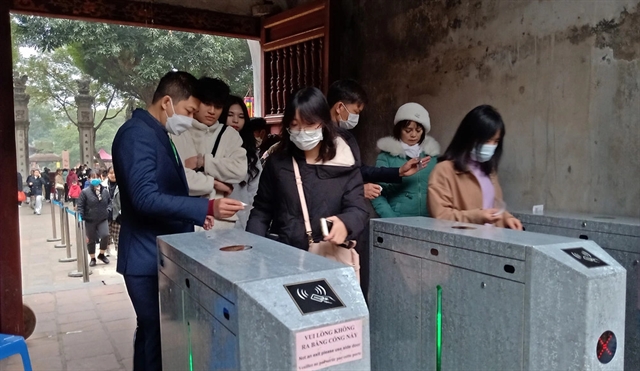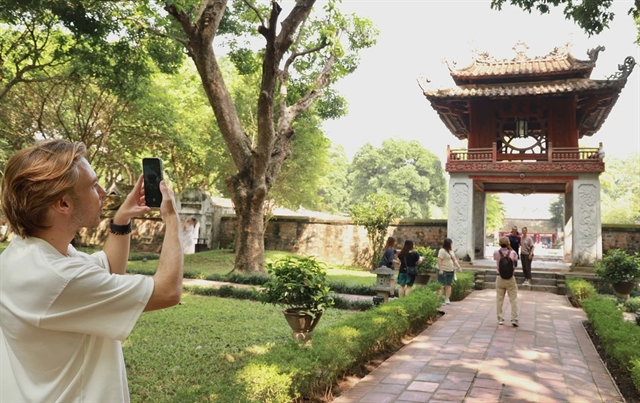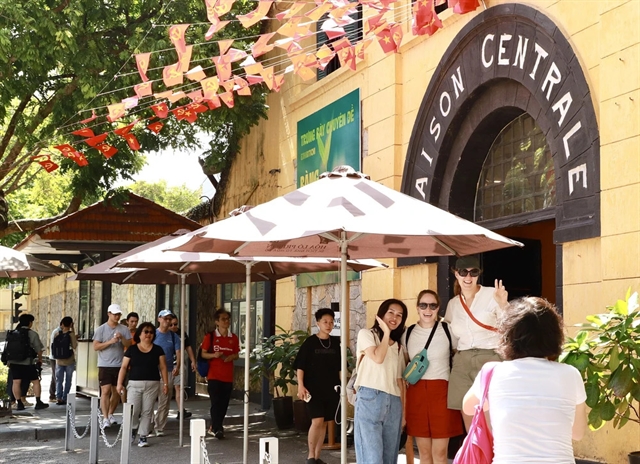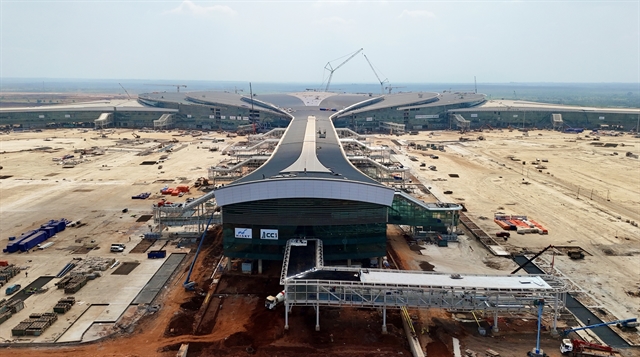 Life & Style
Life & Style

by Tuyết Mai - Quỳnh Hoa
 |
| The electronic ticketing system now in use at the Temple of Literature – Quốc Tử Giám. Photo TITC |
Once known for its stillness, with pagodas reflected in lake water and yellow-walled alleys steeped in incense, the Vietnamese capital Hà Nội is now making noise through two quiet revolutions — digital transformation and green transition. Together, they are reshaping one of Asia’s most historic cities into a smart tourism hub where heritage is not replaced but reimagined.
From electronic ticketing at UNESCO-listed sites to 3D virtual tours of imperial relics and AI-powered audio guides that share history in multiple languages, Hà Nội is proving that modernisation need not mean erasure. Instead, it can be a form of reverence — protecting the past not by freezing it, but by allowing it to speak in new forms.
Digital gateways to heritage
At the heart of Hà Nội’s transformation lies a simple yet powerful shift: paper tickets have given way to digital codes.
What may appear to be a minor change to visitors is, in fact, a strategic move towards both sustainable tourism and efficient heritage management. Electronic ticketing is now in place at major cultural landmarks, including the Temple of Literature, the Imperial Citadel of Thăng Long, Hỏa Lò Prison Relic Site, and Đường Lâm Ancient Village. QR-based check-ins replace long queues, reduce paper waste and provide real-time data on visitor flows.
 |
| Locals capturing autumn moments in traditional áo dài — a timeless Hà Nội ritual amid modern surroundings. VNA/VNS Photo Khánh Hoà |
Nguyễn Quyết Tâm, a digital transformation expert and member of the National Digital Government Committee, describes it as “a dual benefit model — one that advances both environmental responsibility and operational intelligence”.
“Digital ticketing is not just a convenience,” he said. “It helps optimise resources, minimise paper consumption and enhance the overall experience. By 2030, we aim for 80–90 per cent of Hà Nội’s heritage sites to operate fully on electronic ticketing systems.”
The complex of the Temple of Literature and the Imperial Academy (Việt Nam’s first university), one of the country’s most treasured cultural icons, stands as a pioneering example. Once burdened by long queues for paper tickets — particularly during exam season when thousands of students arrive to pray for good fortune — the site now welcomes visitors through online booking and QR scanning.
Nguyễn Liên Hương, deputy director of the Cultural and Scientific Activity Centre of the Temple of Literature, reflected on the change.
“Technology does not diminish sacredness,” she said. “On the contrary, it preserves it. By removing chaos at the gate, we protect both the dignity of the heritage and the peace of the visitor.”
 |
| The Temple of Literature — Việt Nam’s first university — remains a symbol of cultural legacy reimagined for the digital age. VNA/VNS Photo Vân Chi |
Blending tradition with innovation
The results are tangible. Within two years of implementation, digital ticketing has helped streamline financial reporting, prevent fraud, improve staffing efficiency and even opened the door to new experiences, such as night tours, self-guided audio walks and digital souvenir systems.
Meanwhile, in smaller communities, technology is creating new ways to tell history without requiring a tour guide on every corner. In Liên Phái Pagoda, located in Hai Bà Trưng District, more than 28 heritage sites have been equipped with QR codes, allowing visitors to scan and instantly access historical narratives, photographs or audio retellings. What once required pre-arranged guides can now be explored independently.
At the Imperial Citadel of Thăng Long, 3D mapping and virtual reconstruction bring lost palaces back to life. Visitors can use smart devices to trigger animated overlays of ancient throne halls atop excavation sites, bridging centuries with a single swipe.
Even Hỏa Lò Prison, once a notorious colonial jail, has adopted immersive lighting, soundscapes and projection systems to create emotionally resonant night tours — proving that technology is not merely a tool of efficiency but also of empathy.
Yet Hà Nội’s journey toward becoming a smart tourism capital is not without obstacles.
Unstable internet connections can disrupt scanning systems. Independent travellers — especially older visitors — may still struggle with digital interfaces. Some QR codes are placed too discreetly to be noticed. And while electronic tickets offer efficiency, they lack the sentimental charm of paper stubs that tourists once kept as souvenirs.
Experts suggest practical refinements rather than radical change: stabilised offline backup systems, bilingual ticket designs with commemorative value, multilingual communication campaigns, continuous staff training, and stronger integration across platforms -- from official websites to mobile apps and social media channels.
 |
| Hỏa Lò Prison Relic Site — where historical testimony meets immersive storytelling through sound and light. VNA/VNS Photo Vân Chi |
A city where past, future meet
For Hà Nội, technology is no longer an experiment; it is the foundation for a new cultural economy. With nearly 6,000 registered heritage sites — the highest concentration in Việt Nam — the city holds a living archive vast enough to power not only tourism but film, gaming, publishing, and education.
But perhaps the most remarkable thing is this: modernisation has not erased the poetry of the city.
Electric trams glide past French villas at dusk. QR codes shimmer softly beneath banyan trees. Young travellers livestream their temple visits with virtual filters yet still pause to bow their heads before ancestral altars.
In Hà Nội, progress is not loud; it is patient.
It grows like ivy along ancient walls — persistent, respectful and unshakable.
And in that quiet convergence of past and future, the city is not simply adapting.
It is leading. VNS

.jpg)


